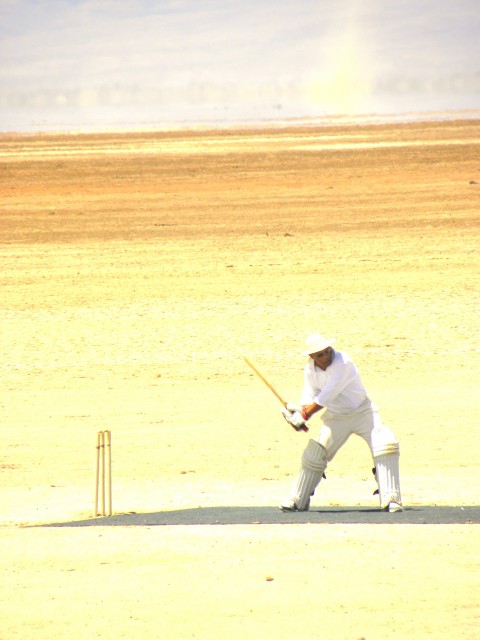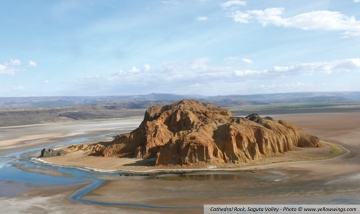Cricket in the Chalbi Desert
Cricket in the desert at 50 degrees - now that really is one of the craziest events I've attended!

The light aircraft buzzed over the desert, then banked in a sweeping arc and swooped low. The pilot peered through dusty windows. A cricket match? In the middle of the desert? On stark blistering sand?
The idea was born to Adrian Radcliff, instigator of the Nomads Cricket Club, in 2004. Having worked in northern Kenya 25 years before, he had a hankering to return to this harsh and stunning part of Kenya. And what better way than by organising a charity match with his cherished cricket team? The 50° temperatures, scorching sands and swirling dust devils didn’t daunt his determination and in 2004 the first match took place. The players and their sponsors donated books and equipment to Kalacha Nomadic Girls Boarding Primary School, a school that echoed the team’s own nomadic status.
In 2008, the charity cricket match was played in Ileret. And in 2012, for the first time since that exploratory trip, the Nomads returned to Kalacha.
The supply truck, having left Nairobi two days earlier and suffered the usual breakdowns and mishaps that occur on a journey of this magnitude, arrived only minutes before the planes carrying the two teams. In record-breaking time, the camp crew erected a circle of tents around the straggling acacia tree that provided the only shade in this searing place. Ice-cold beers, extracted from dry ice, and the raised plunge pool at the mission, spurred the holiday atmosphere.
The talk at the dinner table was all cricket. The players were allocated to teams: Nomads Kenya or Nomads Commonwealth. The match was to comprise two innings per team, with 17 overs per innings. Every bowler was limited to a maximum of three overs. Every batsman who scored over 25 would have to retire.
Well before daylight the following morning, the players, head-torches glinting, hit the showers and donned their whites. Arms swung in practice bowling and balls were tossed between breakfast tables; anticipation was as dense as the heat in the air. The sun peeked over the horizon, the temperature soared and the teams set off across the desert.
The ‘cricket pitch’ was a shimmering stretch of sand before the spectacular backdrop of Mt Kulal. The men rolled out the mat and marked the boundaries. Dry earth resisted their sticks, and water, poured onto the sand in the hope that it would soften it, evaporated without trace. Faces flushed red as hammers pounded sticks into the arid desert.
Nomads Kenya won the toss and chose to field first, knowing that the already intense heat would only increase. Long shadows unfurled from the feet of the players as they took their places on the pitch. Then the first ball was bowled.
At the end of the first innings the players, flushed with exertion and sun, made for the sparse shade of the truck and gulped water. But before long, enthusiasm undimmed, they strode back into the heat haze.
Shadows shrank into dusty feet; faces glowed red; hair lay slick against sweating foreheads. As each innings progressed and the temperature climbed even further, the players’ determination increased. At 1 o’clock the final innings started; Nomads Kenya needed 94 to win. And at the end of the very hottest hour of the game, Nomads Kenya got the result they were looking for.
Tamara Britten, 01 April 2022
Published also in: Concierge Magazine
About the region
Northern Kenya

Vast tracts of desert stretch across Kenya’s remote northern region. Lake Turkana, known as the Jade Sea, slices through the desert. Jagged, forested mountains rise from this stunning yet savage terrain. The region, known as the Cradle of Mankind, is the site of some of the world’s most important prehistoric discoveries.
Read more about Northern Kenya